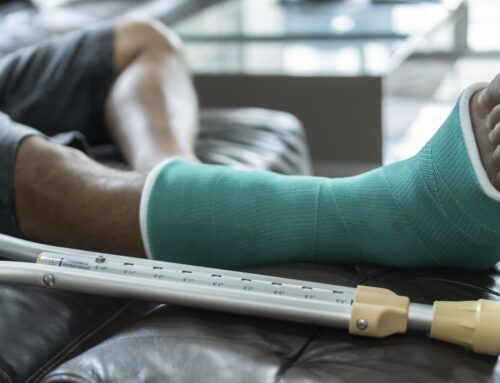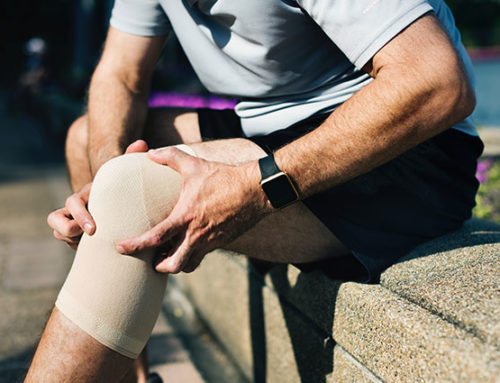Because we typically cannot feel what is happening inside our bones, concern about our overall bone health might not be top of mind. Yet over 10 million Americans have osteoporosis, a disease that affects bone density, and over 54 million are at an increased risk of developing it.
Throughout our life, cells continuously update the microscopic framework that keeps our bones healthy. Like a never-ending reconstruction project, old bone mass is broken down and replaced daily with new bone. Along with aging, factors such as hormonal changes and calcium and vitamin D deficiency can cause a decline in bone mineral density, leading to osteoporosis.
Individuals with osteoporosis often experience loss in height, stooped posture, and a higher risk of bone fractures. Fortunately, there are many things you can do at all ages to help prevent and treat osteoporosis. Cary Orthopaedics is here to help you understand the risk factors and causes associated with this condition.
What is osteoporosis?
Osteoporosis is a chronic disease of the bones. The condition’s name is Latin for “porous bones.” The inside of a healthy bone has small spaces like a honeycomb. Osteoporosis causes these spaces to grow larger.
When bones have more open space inside them, they lose strength and density. The outside of the bone also becomes weaker and thinner. Patients with osteoporosis have bones that break down quicker than they can rebuild.
This deterioration of bone tissue leads to an increased risk of broken bones, known as fragility fractures. People with osteoporosis can suffer a fragility fracture while doing routine activities such as standing or walking.
Q: What areas of the body does osteoporosis most affect?
A: Osteoporosis most commonly affects your ribs, hips, and the smaller bones in your wrists and spine.
Causes and risk factors
Before the age of 25, our bodies increase bone density by producing more new bone than breaking down bone. From around age 25 to 50, bone density tends to stay stable with an equal amount of bone formation and bone breakdown. Over age 50, bone breakdown becomes faster than bone production, and bone loss often accelerates.
Most people reach their highest bone density and mass in their early 20s. Although the condition can occur in younger people, those under 50 are not usually at a high risk of developing osteoporosis.
Age and gender are the two most common risk factors for osteoporosis. Individuals who are 50 and older are at the highest risk for developing the disease. Women are also at a higher risk, because they typically have smaller, thinner bones than men.
Hormonal changes in women over 50 also plays a role in the likelihood of developing osteoporosis. When a woman goes through menopause, she may experience a drop in estrogen levels. Because that hormone can contribute to strong bones, lower estrogen levels can lead to faster bone breakdown and result in weak, brittle bones.
Other factors that increase the chance of developing osteoporosis include:
- Family history
- Excessive alcohol consumption
- Smoking
- Long-term corticosteroid use
- Diseases of malabsorption
- Low body mass index
- Certain medications such as proton pump inhibitors and some seizure medications
- Malnutrition
- Certain diseases, such as rheumatoid arthritis (RA) or multiple myeloma
How is osteoporosis diagnosed?
Osteoporosis is diagnosed in many ways, with the most common being a bone density test. These scans can range from X-rays to CT scans. An orthopedic doctor might also advise a patient to have a DXA scan.
A DXA scan is a painless and non-invasive test that measures bone mineral density. DXA scans are performed at outpatient imaging facilities but need to be ordered by a doctor.
Other tests, like blood work, can help support a diagnosis of osteoporosis or rule out the condition.
Osteoporosis treatments
While there is no cure for osteoporosis, there are numerous treatments involving lifestyle modifications and medications.
The most aggressive way to treat osteoporosis is with prescription medications, ranging from bisphosphonates to denosumab. These medications include:
- Alendronate
- Ibandronate
- Risedronate
- Zoledronic acid
- Denosumab
Along with these possible treatments, hormone-related medications can also be prescribed. For women in menopause, hormone replacement therapy is another treatment option.
Preventing osteoporosis
Those with osteoporosis are encouraged to consume plenty of vitamin D and calcium supplements. Calcium is the mineral needed to maintain healthy bones, and vitamin D helps the body absorb the calcium it needs. This mineral and vitamin together can help slow bone deterioration.
Calcium-rich foods such as these can also help prevent osteoporosis:
- Dairy products
- Enriched grains and breads
- Dark green vegetables
- Soy-based foods
Many risk factors can be out of your control, like a family history of osteoporosis. However, with healthy lifestyle practices, you can be proactive in maintaining strong, healthy bones:
- Consume plenty of calcium and vitamin D in your diet
- Participate in weight-bearing exercises and other physical activity
- Quit smoking
Cary Orthopaedics also provides tips for strengthening bones that can help reduce the risk of developing osteoporosis.
Osteoporosis treatment in Cary, Holly Springs and Morrisville
If you or a loved one is concerned about osteoporosis, talk to your doctor about the best way to treat and prevent it. Cary Orthopaedics’ physicians utilize the latest medical science to treat all types of bone conditions and joint injuries. Contact Cary Orthopaedics today for an appointment in Cary, Morrisville or Holly Springs.






